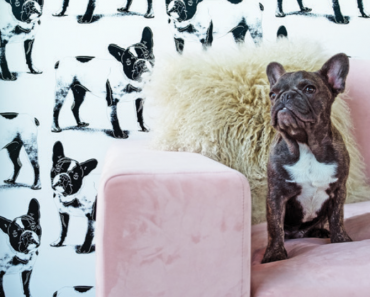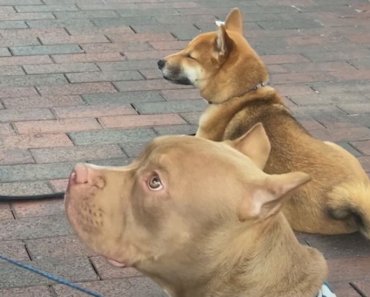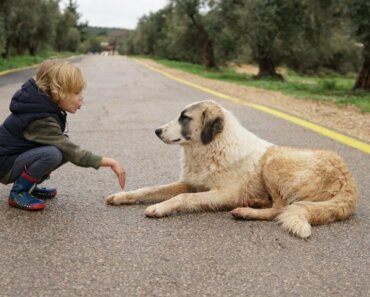Looking for a party? The bright neon orange stripes of a glowlight tetra shoal will light up your tank like a true spectacle! Their small size, hardiness, and intense coloration make these peaceful fish a favorite among beginners and experienced aquarists alike.
Keep reading to find out everything you need to know about glowlight tetra care and keeping these tropical fish in your own aquarium!
Name
Hemigrammus erythrozonus is now commonly known as the glowlight tetra. These fish were originally categorized as Hemigrammus gracilis.
There is still some discussion as to if their characteristics and scientific name, Hemigrammus erythrozonus,better align with the Cheirodon genus instead.
Natural habitat
Glowlight tetras come from the Essequibo River, which is the longest river in Guyana, South America. Due to its length, this waterway traverses through several different biotopes, housing a diverse and large amount of species.
The glowlight tetra is mostly found in the more forested areas off in the branching tributaries as opposed to the main river. The water there is usually highly acidic, soft, and stained with tannins from decaying plant material and other organic particles.
These fish like to school, so they are often found in large groups in the middle water column. However, they are usually only found schooling with other Hemigrammus erythrozonus andare unlikely to be found with other species of tetra.
Identification
What makes these fish so popular is the red/orange neon stripe that runs along the length of their body. Adult glowlight tetras will reach a maximum size of about 2 inches (5 cm) and will have clear bodies apart from their signature stripe. They may also have some red coloring at the front of their dorsal fins.
Like other tetra species, female glowlight tetras tend to be larger than males; this becomes especially clear if the female is carrying eggs. Otherwise, it may be difficult to tell the two apart.
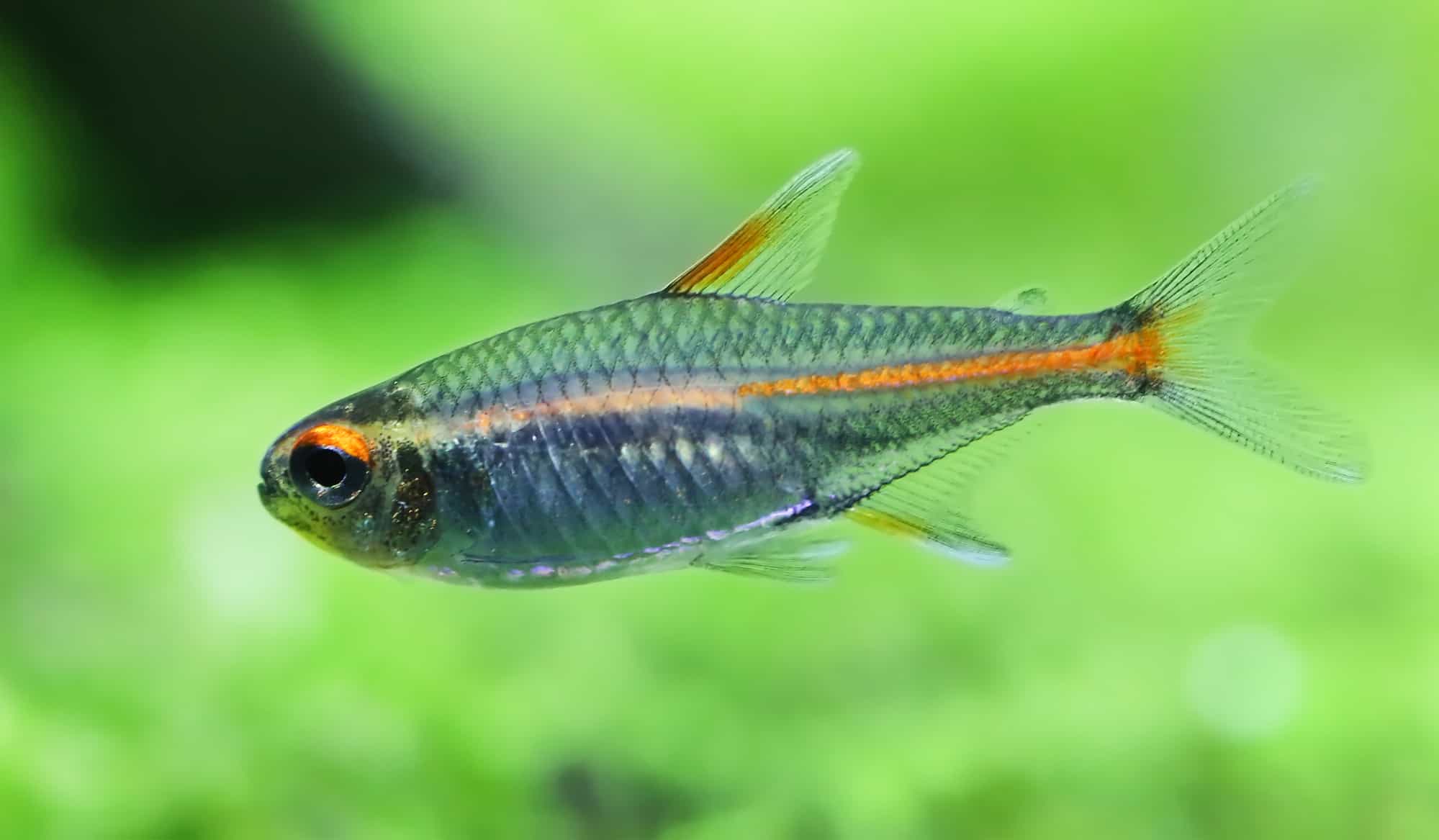
Glowlight tetra tank requirements
The glowlight tetra is a very easy fish to care for and doesn’t need much more than stable water parameters, good filtration, and compatible tank mates. Many hobbyists like to highlight their stripes by using a dark aquarium substrate and dimmed lighting; substrate preference doesn’t matter too much for the health of the fish, so gravel and sand both work.
However, if you want to add plants to help replicate their natural habitat in South America, it may be best to go with sand so that roots can grow easier. Plants will also provide your glowlight tetra with plenty of hiding spots and create a beautiful backdrop for them to shine against. Just make sure that there is enough swimming space as this species definitely likes to be out and about in a school!
It is highly recommended to keep at least 6 glowlight tetras in a minimum tank size of 10 gallons (37.8 L), with 15 gallons (56.8 L) being even better. Water temperature should remain at a stable value between 75-82° F (24-28° C), with KH between 4-8, and pH between 5.5-7.0; more acidic water conditions tend to make your glowlight tetra glow a little more.
To help lower your pH and attain the naturally stained water from where your glowlight tetra originates, try using Indian almond leaves.
Are glowlight tetras hardy?
The glowlight tetra is popular due to it being inexpensive and incredibly easy to care for; these fish don’t require much else than the right-sized tank and stable water conditions. They recover quickly from parameter swings and are an active schooling species, making them a fun addition to the beginner tank.
How many glowlight tetras can I put in a 10 gallon tank?
While 10 gallons may be a little on the small size, you should be able to comfortably fit 6 glowlight tetras by themselves; 6 is the bare minimum group size that these fish should be kept in. If possible, get a longer tank as opposed to a tall tank to provide more swimming space.
In larger tanks, never hesitate to add another glowlight tetra to your school; your new fish will immediately fit right in!
Glowlight tetra tank mates
On top of being an incredibly easy fish, this species is likely to get along with many other community species, like other tetras, rasboras, danios, dwarf gouramis, and peaceful catfish and loaches; however, as mentioned before, they are unlikely to school with any other fish besides other Hemigrammus erythrozonus.
As always, avoid any species that can easily fit a glowlight tetra into its mouth, like larger cichlids, angelfish, and oscars.
All peaceful invertebrates should be compatible with your fish as well.
Glowlight tetra behavior
The main appeal about these fish is their peaceful schooling behavior; these tetras simply look spectacular in a huge group! They tend to stay in the middle water column and react as a whole. In smaller groups, these fish tend to be shyer and are more likely to stay away from the front of the tank.
Glowlight tetra diet
Like all tetras, the glowlight tetra is an omnivore and will readily accept an assortment of foods from fish flakes to frozen foods to live foods. Because they are so small, it is important to make sure that the food you’re giving is not too large. It may also be better to feed more frequently than in quantity.
A mixture of high-quality foods will keep your fish healthy and vibrant. A variety of frozen and live foods, like brine shrimp, bloodworms, and mosquito larvae will keep your tetra glowing as bright as ever.
Breeding glowlight tetras
Because they are in such high demand in the tropical fish trade, the glowlight tetra is regularly bred. However, the process is not the simplest and some beginner breeders may have difficulty; if you’re just starting out, check out our list of 7 easy fish to breed!
The glowlight tetra is an egg-scattering fish. This means that it would be best to set up an additional breeding tank to make sure that the eggs are not immediately eaten by other fish and invertebrates in the tank.
The breeding tank water parameters should match those of the main display, with soft and acidic water stained with tannins. The water temperature should be a little higher, between 78–84° F (25.6–28.9° C), with ambient lighting being sufficient. Fine-leaved plants, like java moss, should be abundant; you can also use a spawning mop or other type of mesh/crate as a substitute.
In the main display, feed your fish often, provide an assortment of foods, and keep water values stable. Wait until you can noticeably differentiate the females from the males–by looking for a plumper body–and remove them from the tank. In the breeding tank, the male will court the female until spawning the next morning.
Up to 100-150 eggs can be laid and will be eaten if the parent fish are not removed, so transfer your tetras back to the main display as soon as possible. These eggs will hatch in a couple of days and become free-swimming in about 3-4 days; it is important to keep the tank especially dark during this time as the eggs are very sensitive to light.
Feed the fry infusoria for the first few days and then switch to crushed fish flakes; continue to move onto larger foods as the fish start to grow. Once they have become a reasonable size, transfer them into the main tank or give them to another hobbyist!
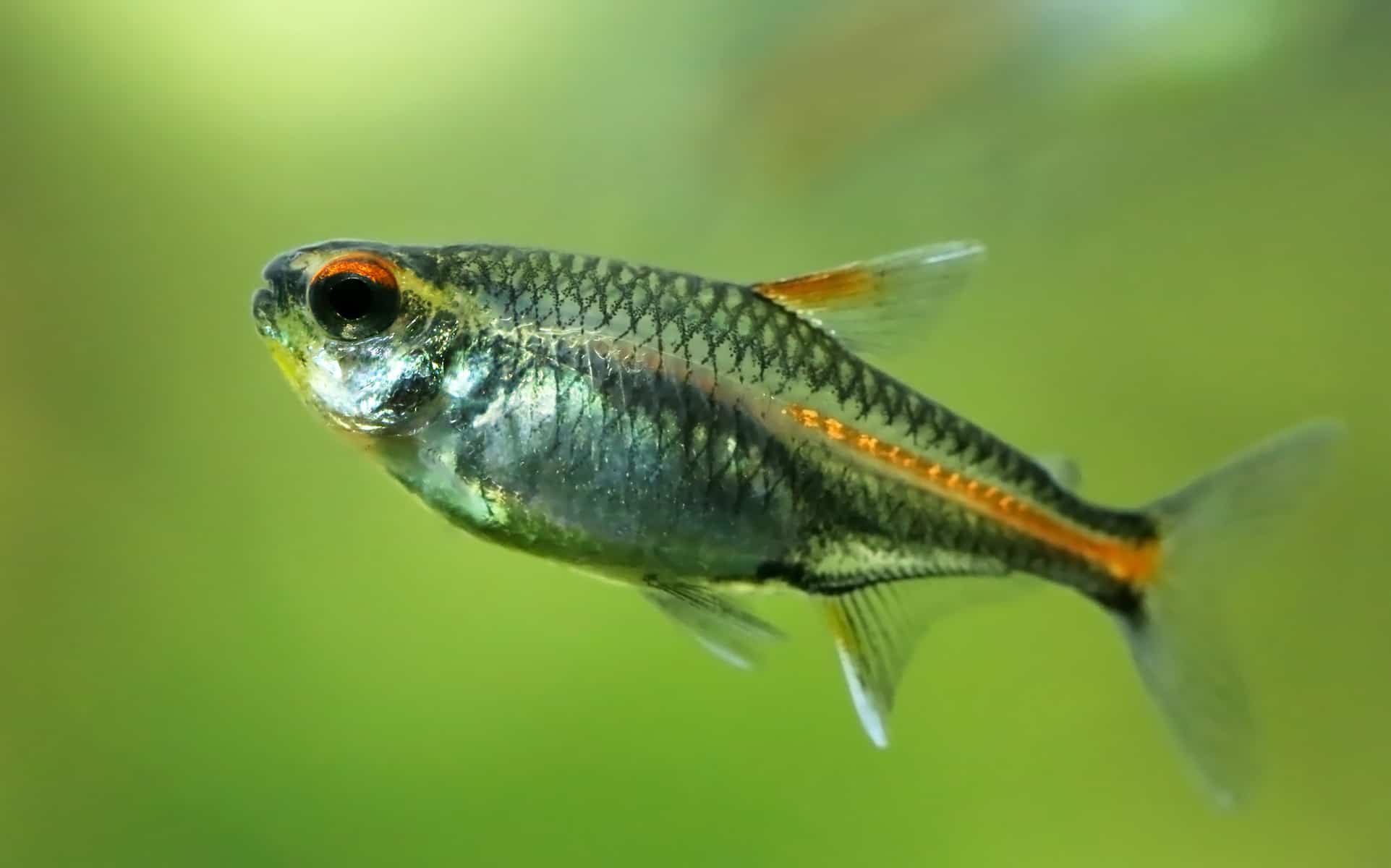
Conclusion
The glowlight tetra is one of the easiest and most popular freshwater fish, and for good reason. Their simple and striking appearance, easy care, and schooling behavior make them a favorite among fish hobbyists of all experience levels.
If you have any questions about Hemigrammus erythrozonus care or have experience keeping these fish in your own aquarium, don’t hesitate to leave a comment below!

